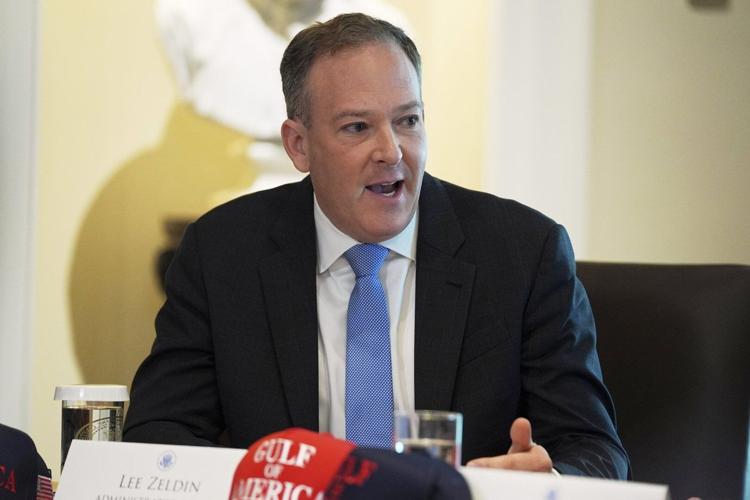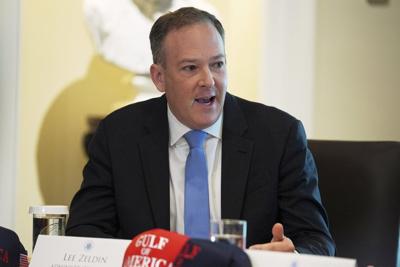The Environmental Protection Agency on Friday announced a broad reorganization as part of the Trump administration’s drive to cut costs that some activists worry will harm the agency’s independent scientific research.
Administrator Lee Zeldin announced changes that included creating a new unit within his office ŌĆ£to align research and put science at the forefront of the agency’s rulemakings.ŌĆØ He said the overall reorganization would boost efficiency and save at least $300 million annually, though he didn’t detail how the money would be saved.
Though Zeldin didn’t mention it by name, some scientists and activists saw it as an attack on EPA’s Office of Research and Development, which has long provided the scientific underpinnings for EPAŌĆÖs mission to protect the environment and human health. The agency said it would shift ŌĆ£its scientific expertise and research efforts to program officesŌĆØ that focus on major issues like air and water.
Separately on Friday, President Donald Trump unveiled a proposed budget to cut that office’s funding by $235 million.
Trump’s budget said the cut would put “an end to unrestrained research grants, radical environmental justice work, woke climate research, and skewed, overly-precautionary modeling that influences regulations ŌĆö none of which are authorized by law.ŌĆØ
Agency researchers have improved air pollution monitoring, found high levels of PFAS in drinking water sources, provided flood prevention resources and made more information available on chemical safety.
EPA’s possible plans to lay off as many as 1,155 staffers in the office ŌĆö as much as three-fourths of its workers ŌĆö . Those cuts are part of a broader push by Zeldin to cut EPA’s budget by about two-thirds.
The Office of Research and Development has 10 facilities across the country. It was designed to be insulated from politics so it can produce essential science.
Camden Weber, climate and energy policy specialist at the Center for Biological Diversity, said, ŌĆ£is a textbook move from the authoritarian playbook.ŌĆØ
ŌĆ£By gutting key institutions and driving away experts, this attack will endanger public health, clean air, and environmental progress, while undermining independent scientific research in America,ŌĆØ Weber said.
ŌĆ£This is a reorganization, not a reduction in force,ŌĆØ EPA spokeswoman Molly Vaseliou said.
Zeldin’s announcement also included the creation of the Office of State Air Partnerships to work ŌĆ£with, not againstŌĆØ states and other agencies to handle plans for pollution reduction by states. The EPA has long had authority to impose its own plan if states were seen as not doing enough to cut pollution.
The EPA said that change would make sure states get consistent treatment no matter their geography.
ŌĆ£The problem is that some areas of the country have much worse air pollution, and it cannot be treated as a one-size-fits-all,ŌĆØ said Kyla Bennett, director of science policy at the Public Employees for Environmental Responsibility, a union for public employees focused on environmental ethics.
The new office for scientific review will be called the Office of Applied Science and Environmental Solutions. EPA said it would ŌĆ£gain more than 130ŌĆØ experts in science and other fields to to complete long-delayed reviews of hundreds of chemicals and thousands of pesticides.
ŌĆ£When finalized, EPA expects to have staffing levels near those seen when President Ronald Reagan occupied the White House,ŌĆØ Zeldin said.
EPA had about 15,000 employees before cuts began. The agencyŌĆÖs employment during the Reagan years ranged from roughly 11,000 to around 14,400 people.
___
Associated Press writer Matthew Daly contributed reporting.
___
The Associated Press receives support from the Walton Family Foundation for coverage of water and environmental policy. The AP is solely responsible for all content. For all of APŌĆÖs environmental coverage, visit




























